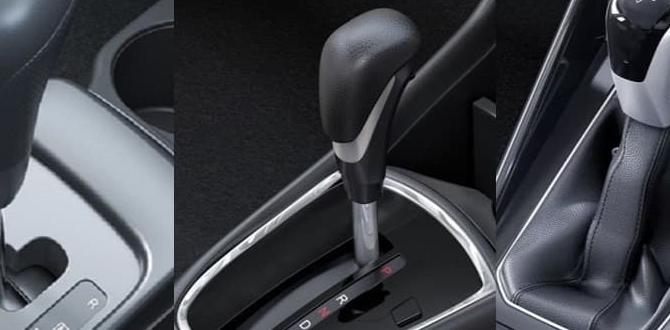For cutting HDPE, a single flute end mill is generally the better choice for beginners, as it offers superior chip clearance and prevents melting, ensuring cleaner cuts and less tool wear compared to a 2-flute end mill.
So, you’re diving into the world of machining or CNC routing, and you’ve landed on High-Density Polyethylene (HDPE). Great material – it’s tough, versatile, and surprisingly easy to work with, when you have the right tools. But then you hit a common snag: which end mill do you use? Specifically, should you grab a single flute or a two-flute end mill for your HDPE project? It’s a question that can leave even seasoned makers scratching their heads. The wrong choice can lead to melted plastic, rough edges, and frustrating tool chatter. Don’t worry, we’ll clear this up, making it simple so you can get back to making. We’ll break down exactly why one flute might be your HDPE hero.
Understanding HDPE and the Importance of Chip Evacuation
High-Density Polyethylene (HDPE) is a fantastic plastic for many projects. You’ll find it in everything from cutting boards and food containers to playground equipment and even some automotive parts. Its properties are great: it’s strong, resistant to chemicals and moisture, and has a low coefficient of friction. However, when you start cutting it, it behaves a bit differently than wood or softer plastics.
The key challenge with HDPE is its relatively low melting point and its tendency to gum up tools. When you mill or rout HDPE, the friction from the cutting tool generates heat. If this heat isn’t managed properly, the plastic can start to melt and stick to the cutting flutes. This is what we call “chip welding” or “gumming up.” Melted plastic plastered to your end mill isn’t just messy; it ruins your cut quality, can chatter and vibrate your machine, and will dull or even break your tool very quickly.
This is where understanding chip evacuation becomes crucial. Chip evacuation is simply how effectively your cutting tool clears away the material (chips) it’s cutting. Good chip evacuation means the waste material is removed from the cutting zone quickly and efficiently. This process does two very important things:
Reduces Heat Buildup: Chips are hot! By removing them quickly, you prevent them from re-melting and re-fusing to the workpiece or your tool.
Prevents Tool Loading: When chips don’t clear, they pack into the flutes, effectively making the tool larger and blunter. This increases the cutting forces, generates more heat, and leads to poor cut quality.
For materials like HDPE that are prone to melting, excellent chip evacuation is not just a good idea – it’s essential for a successful cut.
Single Flute End Mills: The HDPE Champ
So, why is a single flute end mill often the go-to choice for HDPE? It all comes down to its design and how it interacts with softer, melt-prone materials.
A single flute end mill has one continuous cutting edge that spirals around the tool. This design is inherently simple. As the tool rotates, this single flute cuts and then lifts the chip away from the material.
Here are the main advantages of using a single flute end mill for HDPE:
Superior Chip Clearance: This is the big one. With only one flute, there’s a much larger space (gullet) between the cutting edge and the tool’s core. This larger space means that the chips generated by cutting HDPE have plenty of room to escape. They can be easily ejected from the cut, preventing them from packing up and causing problems.
Reduced Heat Generation: Because the chips are evacuated so effectively, there’s less friction and less chance of the material re-melting. The single flute also spends less time in contact with the newly cut material, further helping to keep temperatures down.
Lower Cutting Forces: A single flute tool generally exerts less force on the material compared to a multi-flute tool operating at the same feed rate and depth of cut. This can be beneficial for keeping your machine stable and preventing workpiece deflection, especially with thinner sheets of HDPE.
Increased Feed Rates Possible: With effective chip evacuation and lower heat, you can often push a single flute end mill faster into HDPE. Machinists call this “feed rate.” A higher feed rate means you can cut through your material more quickly, improving productivity.
Less Tool Loading: As we’ve discussed, tool loading (when plastic melts onto the tool) is a major enemy of HDPE machining. The superior chip clearance of single flute end mills drastically reduces the likelihood of this happening.
Think of it like this: if you were trying to clear a pile of snow, would you rather have a shovel with one wide scoop or two narrow ones? The single, wider scoop (like the gullet of a single flute end mill) can move more snow at once and get it out of the way faster.
2 Flute End Mills: When and Why They Might Not Be Ideal for HDPE
Now, let’s look at the 2 flute end mill. These tools have two cutting edges that spiral around the tool. They are very common and versatile for many materials like aluminum, brass, and some plastics and woods. However, for HDPE, they come with a few drawbacks that beginners should be aware of.
Here’s why a 2 flute end mill can be problematic for HDPE:
Restricted Chip Clearance: With two flutes, the space between the cutting edges (the gullet) is smaller. This means each flute has to carry away more material relative to its size, and the chips have less room to escape. For a sticky material like HDPE, this can quickly lead to chip packing.
Increased Risk of Melting and Gumming: Because chip clearance is limited, the chips are more likely to get trapped in the flutes. As the tool continues to cut, these trapped chips are re-cut and heated, increasing the melting of the HDPE. This is the primary reason why 2-flute end mills aren’t usually the first choice for HDPE.
Higher Potential for Tool Chatter: When chips start to pack and the tool begins to melt, it can lead to uneven cutting. This uneven cutting causes the tool and the workpiece to vibrate against each other, producing a rough, noisy cut known as “chatter.” Chatter not only ruins the finish but can also damage your machine and tooling.
More Heat Generated: The inefficient chip evacuation means heat builds up more rapidly. This increased heat is the direct cause of material melting onto the tool.
Can Work, But Requires Care (and Often Specific Geometries): While not impossible, using a 2-flute end mill for HDPE requires slower feed rates, lighter depths of cut, good air blast or coolant delivery, and often specific tool geometries (like helix angles optimized for plastics). This adds complexity that a beginner might not need.
In essence, a 2-flute end mill is like having two narrower shovels. While they also move snow, they can get clogged more easily, especially if the snow is wet and heavy. You can still use them, but you have to work slower and be more careful to keep them clear.
Key Differences Summarized: Single vs. Dual Flute in HDPE
To make the choice clear, let’s put the differences side-by-side.
| Feature | Single Flute End Mill | 2 Flute End Mill |
|---|---|---|
| Chip Clearance | Excellent (Large Gullet) | Fair to Poor (Smaller Gullet) |
| Melting/Gumming Risk | Low | High |
| Heat Buildup | Low | Moderate to High |
| Tool Loading Risk | Low | High |
| Cut Quality in HDPE | Generally superior, clean cuts | Can be rough, prone to melting if not managed |
| Ideal for Beginners? | Yes, much more forgiving | Requires more experience and setup |
| Feed Rate Potential | Higher, due to good chip evacuation | Lower, to manage heat and chip packing |
| Tool Chatter Risk | Low | Higher |
When you’re starting out, it’s always best to make things as easy as possible. The single flute end mill is designed to solve the exact problems you’ll face when cutting HDPE.
Choosing the Right Type of Single Flute End Mill for HDPE
Not all single flute end mills are created equal, even when intended for HDPE. When you’re shopping, look for these specific features:
Right Hand Cut, Right Hand Helix (Standard O-Flute): This is the most common type. It cuts as it spins clockwise (right hand cut) and ejects chips upward (right hand helix). For many general-purpose cutting operations in plastics, this works well.
Left Hand Cut, Right Hand Helix (Upcut – Often called “Plastic Optimised” or O-Flute): This is a popular choice for plastics. The “left hand cut” means the flutes are designed to cut in the opposite direction of normal rotation (counter-clockwise). When combined with a right-hand helix (which still pushes chips up and out), this configuration is extremely effective at lifting chips away from the workpiece. This is a fantastic option for many types of plastics, including HDPE. The upward ejection helps prevent chips from falling back into the cut.
Left Hand Cut, Left Hand Helix (Downcut – Sometimes used): This type cuts counter-clockwise and ejects chips downward. While it provides a very clean top surface and helps hold the workpiece down, it can be problematic for chip evacuation in HDPE, as chips can be forced into the cut. Generally, avoid this for standard pocketing or contouring in HDPE.
“O-Flute” or “Plastic Router Bits”: Many manufacturers will specifically label single flute end mills as “O-Flute” or designed for plastics. These often have polished flutes and specific geometries that further enhance chip evacuation and reduce friction. These are your best bet.
Material and Coating: While you don’t always need a specialized coating for HDPE with a single flute, a polished flute surface (common in “O-Flute” bits) is excellent. Avoid tools with rough, unfinished surfaces. For harder plastics or more demanding applications, a Uncoated carbide tool is often preferred for plastics as coatings can sometimes increase friction or bonding.
For most beginners working with HDPE, a single flute, upcut, O-flute (plastic router bit) is an excellent starting point. This type is designed to get those chips out, keep things cool, and provide a smooth cut.
Essential Parameters for Cutting HDPE with End Mills
Once you’ve chosen your end mill, setting the right cutting parameters is crucial. This is where many beginners run into trouble. These numbers tell your CNC machine how fast to spin the tool (spindle speed) and how fast to move it through the material (feed rate). Getting these wrong is how you end up with melted plastic.
Spindle Speed (RPM)
Spindle speed is measured in Revolutions Per Minute (RPM). This is how fast the end mill spins. For machining plastics, you generally want to run your spindle at a higher RPM than you would for metals. This is because plastics (especially HDPE) are softer and don’t require high forces to cut. A higher speed allows the cutting edge to engage and disengage quickly, reducing heat build-up in the material itself.
General Recommendation for Single Flute in HDPE: Start around 18,000 to 25,000 RPM. Some specialized plastic bits can even go higher.
Why Higher RPM? Faster rotation means each cutting edge spends less time in contact with the material, leading to less heat generation from friction within the plastic.
Feed Rate (IPM or mm/min)
Feed rate is how fast the tool moves through the material. This is where chip evacuation and heat management really come into play.
General Recommendation for Single Flute in HDPE: This is trickier and depends on your machine’s rigidity and the specific end mill. A good starting point might be between 20 to 60 Inches Per Minute (IPM). For smaller diameter end mills (e.g., 1/8″), you’ll be at the lower end. For larger ones (e.g., 1/4″), you can push towards the higher end.
The Chip Load Concept: A more advanced way to think about feed rate is “chip load.” Chip load is the thickness of the chip that each cutting edge removes.
`Chip Load = Feed Rate / (Spindle Speed Number of Flutes)`
For HDPE, you want a chip load that’s robust enough to form a proper chip and evacuate it cleanly, but not so large that it overheats or overloads the tool. A typical target chip load for a single flute in HDPE might be in the range of 0.004 to 0.010 inches per tooth.
If it Melts, Slow Down the Feed Rate (or Speed Up if you have excessive vibration): If you see melting, your first instinct might be to slow the feed rate. However, sometimes if you’re too slow with the feed rate but your RPM is high, each tooth might be scraping instead of cutting, causing heat. So, if melting occurs, consider testing a slightly faster feed rate along with your high RPM, or drastically slowing down the feed rate while maintaining high RPM. For beginners, just remember: melting often means your chips aren’t clearing well.
Depth of Cut (DOC) and Stepover
Depth of Cut (DOC): Refers to how deep the end mill cuts into the material vertically in a single pass. For HDPE, it’s often better to take multiple shallower passes rather than one deep pass. This reduces the load on the tool and improves chip evacuation. A DOC of 0.100″ to 0.250″ (2.5mm to 6.35mm) is common for typical 1/4″ end mills, but always start shallower and increase if your machine is stable.
Stepover: Refers to how much the end mill moves sideways (horizontally) on each pass when clearing out an area (pocketing). A smaller stepover (e.g., 30-50% of the end mill’s diameter) will result in a smoother finish and less load, but will take longer. A larger stepover (e.g., 60-80%) will be faster but may leave more scallops on the surface.
Cooling and Air Blast
Even with optimal parameters, HDPE can generate heat. Using an air blast directly onto the cutting zone is highly recommended. This helps to:
Cool the cutting edge: Reducing heat transfer to the tool.
Blow away chips: A stream of air can help dramatically with chip evacuation.
Prevent plastic from re-melting: By cooling the material as it’s cut.
If you don’t have an air blast system, try to position a shop vac nozzle to do a similar job.
Practical Steps to Mill HDPE with Your Single Flute End Mill
Let’s put it all together into a step-by-step guide. This assumes you have a CNC router or milling machine set up and your HDPE material is secured.
1. Select Your Tool: Choose a single flute, upcut end mill specifically designed for plastics or labeled as an “O-Flute” bit. A common size for general work is 1/4 inch (6mm). Ensure it’s sharp and clean.
2. Secure Your Material: Make sure your HDPE sheet is firmly clamped or vacuum-held to your machine bed. Any movement during cutting will ruin your project and can be dangerous. Use a spoilboard if necessary to avoid damaging your machine bed.
3. Set Up Tool Parameters in Your CAM/Controller:
Spindle Speed (RPM): Start high, around 18,000 – 20,000 RPM.
Feed Rate: Begin conservatively, perhaps 30 IPM for a 1/4″ bit. You can adjust this later based on results.
Depth of Cut (DOC): Use shallow passes. Start with 0.100″ (2.5mm).
Stepover (for pocketing): Aim for 40-50% of the tool diameter.
Plunge Rate: This is how fast the tool enters the material vertically. Use a slower speed than your general feed rate, perhaps 15-20 IPM, to avoid shock on entry.
4. Enable Air Blast (if available): Turn on your air blast or position your shop vac nozzle to blow air directly at the cutting point.
5. Perform a “Dry Run”: Before cutting the actual material, run your CNC program with the spindle off but the tool at cutting height. This allows you to visually check that the tool path is correct and that the tool won’t crash into any clamps or fixtures.
6. Start the Cut: Begin the machining operation. Watch and listen carefully.
Listen for Chatter: A smooth, consistent sound is good. Loud, grating noises indicate chatter.
Observe Chip Formation: You should see clearly formed chips being ejected from the cut. They shouldn’t look like fine dust or melted goo.
Check for Melting: Keep an eye on the cut edge. If you see plastic accumulating on the tool or a shiny, melted appearance on the cut surface, stop the machine.
7. Adjust Parameters as Needed:
If you see melting/gumming:







